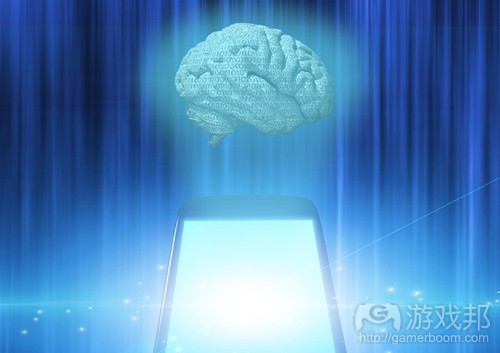我们的手机很快就会比我们更聪明了
作者:Vivek Wadhwa
Ray Kurzweil在1999年做了一个惊人的预测,并且这一预测即将变成现实:即到2023年,一台1000美元的笔记本电脑将拥有与人类大脑相匹敌的计算能力和储存容量。他同样也预测了摩尔定律(即假设计算机的处理能力每隔18个月将翻两倍)将只能用到2025年,在那之后将出现全新的技术变革新范式。
作为著名的未来主义者同时也是谷歌的工程部总监,Kurzweil在不久前告诉我们,硬件对于人类大脑的模仿速度将快于预测(即可能在2020年的时候),即将能使用最适合大脑软件公式的图像处理单位(GPU)等技术。他同时也预测完整的大脑软件的出现将花费较长一点的时间,即大约会在2029年出现在我们面前。
而所有的这些预测都让人难以置信。如果Kurzweil的预测是对的,那么在14年里我们口袋中的智能手机将会变得比我们还要聪明。实际上,如果我们只是专注于计算智能(而排除情感或其它方面的智能),我们的手机可能在7年之内便能够和我们一般聪明—-即大概在iPhone11问世时。并且它们也不会因此止步。这些设备将继续以指数的方式发展,直至超越人类的智力。如今我们的计算机已经拥有比我们更大的优势了:它们能够以超过人类无数倍的速度更快地通过互联网和共享信息相连接。我们很难想象这些优势还能创造出怎样的可能以及这其中拥有怎样的含义。
而对于摩尔定律的寿命以及这些进步的实用性的怀疑都是我们能够理解的。毕竟晶体管的缩减是有限制的:没有什么能比原子再小了。而即使缺少这种物理限制,也仍存在其它技术门槛。英特尔也承认这些限制因素,但是他们也表示摩尔定律能够继续维持5至10年的时间。所以我们的笔记本电脑中基于硅元素的计算机芯片将继续努力去赶上人类大脑的水平。
在我们最近的讨论中,Kurzweil表示摩尔定律并非计算机最重要的一部分,并且不管英特尔能否继续完善硅元素,计算机的这种优势仍会继续延伸下去。摩尔定律只是计算机的5大范式之一:电机,中继,真空管,分立式晶体管和集成电路。在Kurzweil于1999年提出的“加速循环规则”中,他解释了自从地球上出现进化以来技术便以指数方式快速发展着并且计算机能力也飞速提升着—-即从1890年美国人口普查使用的机械计算设备,破解Nazi Enigma代码的机器,CBS真空管计算机,用于首次太空发射的晶体管机,到最近的综合环路个人计算机。
基于飞速发展的技术,很多东西在一开始的发展速度可能相对缓慢,但之后都会以惊人的速度快速前进着。每种新技术都是沿着S曲线发展的—-即一开始以指数方式,然后当技术到达极值时开始趋于平缓。随着技术发展的终止,下一个范式便会出现便取代它。这便是一直以来我们所看到的情况,以及为何在摩尔定律之后会出现全新计算机范式的原因。
现在的我们也即将迎来一些巨大的进步,如GPU,即能够使用并行计算去创造更大的性能提升,并且不只是面向图像,同时也面向了神经网络(游戏邦注:即人类大脑架构的构成)。而处于发展中的3D芯片能够成层地包裹循环。IBM和美国国防部先进研究项目局正在开发认知计算机芯片。像砷化镓,碳纳米管和石墨烯等全新材料也展现出了取代硅元素的巨大潜力。而最有趣也是最可怕的技术还要数量子计算。
比起作为0或1的编码信息,量子计算机能够使用量子位元或量子比特,即通过利用叠加和相连的量子现象去编写一个完整的可能性范围。并且它能够在短短的几分钟内算出今天的计算机需要花很久的时间才能算出算式。
在不断发展的硬件中添加人工智能后,你便会开始意识到为什么像Elon Musk,Stephen Hawking和Bill Gates等人会担心超级智能的创造了。Musk担心“我们会因此召唤出一只恶魔。”Hawking表示它“可能会终结人类这一种族。”Gates则写道:“我不能理解为什么有些人会对此毫不关心。”
Kurzweil却告诉我他并不担心这种情况。他相信我们能够创造一种足够亲切的智能并使用它进一步壮大我们自己。他认为技术就像一把双刃剑,并且就跟熊熊燃烧的火焰一样,既能让我们取暖也有可能将我们烧之殆尽。他相信技术能够帮助我们处理一些长期困扰人类文明的问题,如癌症,饥饿,能量,教育,水等等,并且我们可以永久地利用它们。
对于技术的这些优势是我们应该肯定的。这里存在的问题在于人类是否能够对此应付自如并懂得以有效的方式去利用这些技术。未来的我们有可能创造出《星际迷航》般的世界,在那里我们的文明将发展到一个全新的高度;同时我们也有可能创造出像《疯狂麦克斯》那样的世界。而这一切的一切都是取决于作为人类的我们自己。
(本文为游戏邦/gamerboom.com编译,拒绝任何不保留版权的转发,如需转载请联系:游戏邦)
Our iPhones will soon be more intelligent than we are
VIVEK WADHWA
Ray Kurzweil made a startling prediction in 1999 that appears to be coming true: that by 2023 a $1,000 laptop would have the computing power and storage capacity of a human brain. He also predicted that Moore’s Law, which postulates that the processing capability of a computer doubles every 18 months, would apply for 60 years — until 2025 — giving way then to new paradigms of technological change.
Kurzweil, a renowned futurist and the director of engineering at Google, told me a few days ago that the hardware needed to emulate the human brain may be ready even sooner than he predicted — in around 2020 — using technologies such as graphics processing units (GPUs), which are ideal for brain-software algorithms. He predicts that the complete brain software will take a little longer: until about 2029.
The implications of all this are mind-boggling. If Kurzweil’s right, then within 14 years, the smartphones in our pockets will be as intelligent as we are. In fact, if we focus just on computational intelligence (leaving aside emotional and other forms of intelligence), our phones will match us in just seven years — about when the iPhone 11 is likely to be released. It doesn’t stop there, though. These devices will continue to advance, exponentially, until they exceed the combined intelligence of the human race. Already, our computers have a big advantage over us: They are connected via the Internet and share information with each other billions of times faster than we can. It is hard to even imagine what becomes possible with these advances and what the implications are.
Doubts are understandable about the longevity of Moore’s Law and the practicability of these advances. There are limits, after all, to how much transistors can be shrunk: Nothing can be smaller than an atom. Even short of this physical limit, there will be many other technological hurdles. Intel acknowledges these limits but suggests that Moore’s Law can keep going for another five to 10 years. So the silicon-based computer chips in our laptops will likely sputter their way to match the power of a human brain.
In our recent discussion, Kurzweil said Moore’s Law isn’t the be-all and end-all of computing and that the advances will continue regardless of what Intel can do with silicon. Moore’s Law itself was just one of five paradigms in computing: electromechanical, relay, vacuum tube, discrete transistor, and integrated circuits. In his (1999) “Law of Accelerating Returns,” Kurzweil explained that technology has been advancing exponentially since the advent of evolution on Earth and that computing power has been rising exponentially — from the mechanical calculating devices used in the 1890 U.S. Census, via the machines that cracked the Nazi Enigma code, the CBS vacuum-tube computer, the transistor-based machines used in the first space launches, and more recently the integrated-circuit-based personal computer.
With exponentially advancing technologies, things move very slowly at first and then advance dramatically. Each new technology advances along an S-curve — an exponential beginning, flattening out as the technology reaches its limits. As one technology ends, the next paradigm takes over. That is what has been happening, and why there will be new computing paradigms after Moore’s Law.
Already, there are significant advances on the horizon, such as the GPU, which uses parallel computing to create massive increases in performance, not only for graphics, but also for neural networks, which constitute the architecture of the human brain. There are 3D chips in development that can pack circuits in layers. IBM and the Defense Advanced Research Projects Agency are developing cognitive-computing chips. New materials, such as gallium arsenide, carbon nanotubes, and graphene, are showing huge promise as replacements for silicon. And then there is the most interesting — and scary — technology of all: quantum computing.
Instead of encoding information as either a zero or a one, as today’s computers do, quantum computers will use quantum bits, or qubits, whose states encode an entire range of possibilities by capitalizing on the quantum phenomena of superposition and entanglement. Computations that would take today’s computers thousands of years will occur in minutes on these.
Add artificial intelligence to the advances in hardware, and you begin to realize why luminaries such as Elon Musk, Stephen Hawking, and Bill Gates are worried about the creation of a “super intelligence.” Musk fears that “we are summoning the demon.” Hawking says it “could spell the end of the human race.” And Gates wrote: “I don’t understand why some people are not concerned.”
Kurzweil tells me he is not worried. He believes we will create a benevolent intelligence and use it to enhance ourselves. He sees technology as a double-edged sword, just like fire, which has kept us warm but has also burned down our villages. He believes that technology will enable us to address the problems that have long plagued human civilization — such as disease, hunger, energy, education, and clean water — and that we can use it for good.
These advances in technology are a near certainty. The question is whether humanity will rise to the occasion and use them in a beneficial way. We can either build a Star Trek future, in which our civilization rises to new heights, or descend into a Mad Max world. It is up to us.(source:venturebeat)








































 闽公网安备35020302001549号
闽公网安备35020302001549号